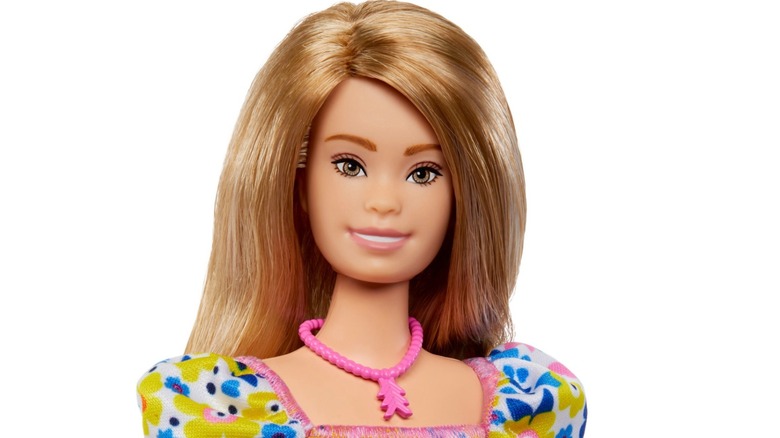Mattel's First Barbie With Down Syndrome Is Powerful Reminder That Representation Matters
In 1959, the world met the first Barbie. Wearing a black and white striped swimsuit, white heels, red lipstick, and red nail polish, she was the first mass-produced adult doll released in the United States. And that's just one of the fascinating facts about Barbie. 64 years later, there are now over 100 Barbie dolls sold every minute across the globe, according to Mattel. Throughout that time, Barbie has expanded its range of dolls, giving her hundreds of different jobs — from astronaut to pet photographer to surgeon. There have been Barbies that represent celebrities, like Cher, Marilyn Monroe, and Heidi Klum. Barbie has represented historic figures as well like the powerful way Barbie honored women's history month in 2021.
The look of Barbie has also evolved over time. They've expanded the range of body sizes for Barbie as well as the range of skin colors. In recent years, Mattel has released Barbie dolls with vitiligo and prostheses. And their latest release is the first Barbie with Down syndrome, marking another important step forward for representation and inclusion.
Mattel worked with the National Down Syndrome Society to create the new Barbie
A Barbie with Down syndrome is something that some have wanted for years, like Kandi Pickard, president and CEO of the National Down Syndrome Society (NDSS). And about a year ago, Mattel approached NDSS to work together on the doll. And it sounds like an effective collaboration. "We had two of our colleagues . . . both women with Down syndrome that were part of the first call all the way to the launch," Pickard explained to NBC News.
"Our goal is to enable all children to see themselves in Barbie, while also encouraging children to play with dolls who do not look like themselves," Lisa McKnight, executive vice president and global head of Barbie & Dolls at Mattel said in a statement. "Doll play outside of a child's own lived experience can teach understanding and build a greater sense of empathy, leading to a more accepting world."
The Barbie with Down syndrome is shorter and has smaller facial features with a flatter profile. She wears ankle foot orthotics, in Barbie pink of course; kids with Down syndrome may need orthotics to walk more easily. The pink necklace the doll is wearing features three upward arrows, which is the symbol for many of Down syndrome as it represents the three 21 chromosomes that cause Down syndrome. And the bright yellow and blue flowers and butterflies on Barbie's dress are the colors of Down syndrome awareness.
